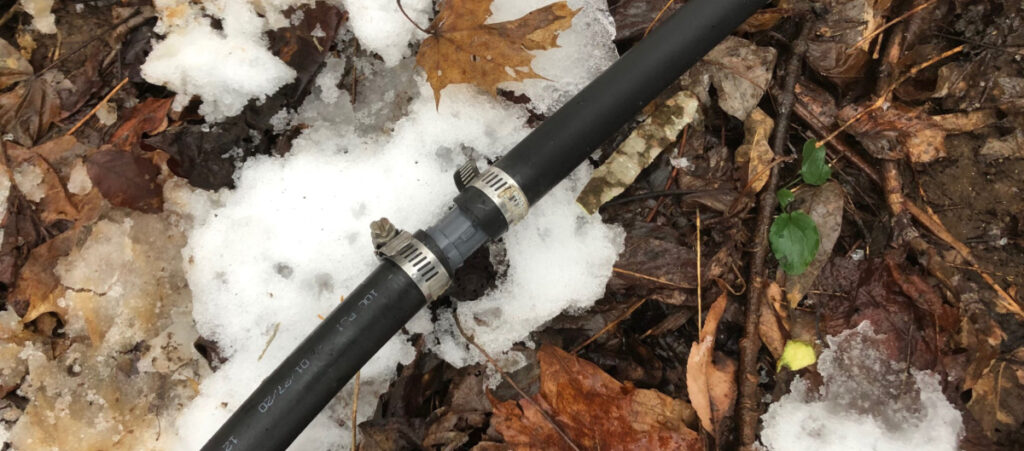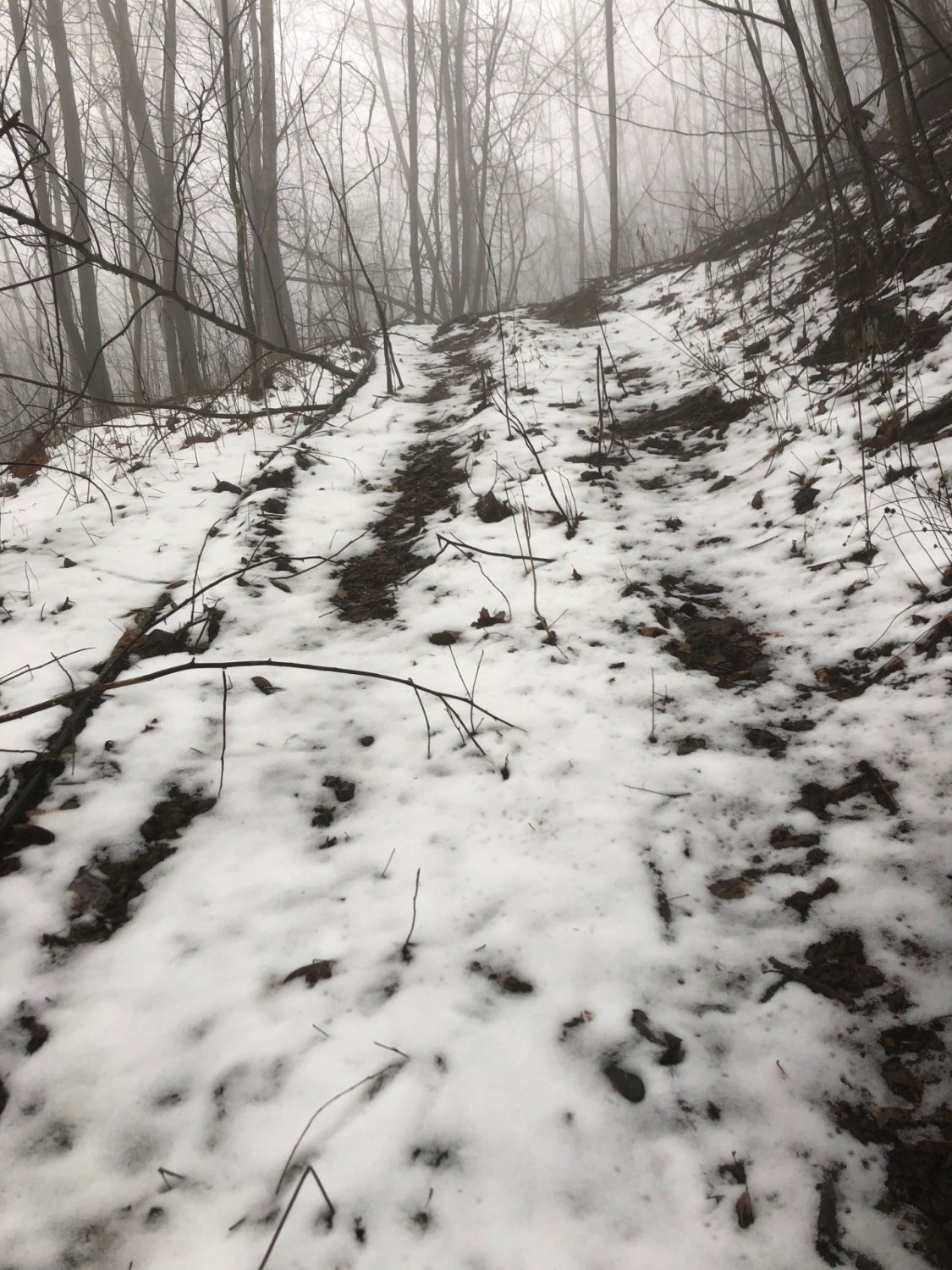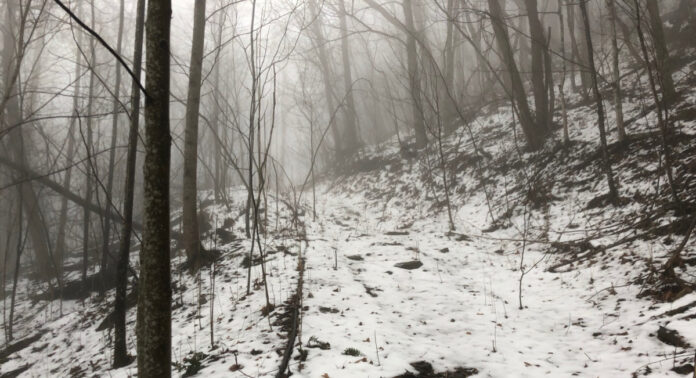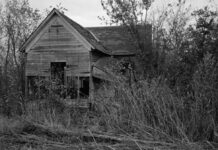We ran out of water on Monday.
The water coming out of our faucets literally slowed down and then fell to a trickle.
I noticed while washing up after breakfast. My wife had been doing laundry all morning, so I suggested she stop and we wait an hour to see if the water pressure recovered.
Nope. An hour later and the water had stopped entirely.
All our water comes out of a spring, runs down a black polyethylene (PE) pipe to a storage tank. A buried pipe brings the water from the tank down the 160 vertical feet to our house, giving us fresh, clean mountain spring water. Something had clearly gone wrong with this system.
Maybe the very cold weather over Christmas had caused something up on the mountain freeze and we were just seeing the impact now because it took that long to use up the water in the tank. I decided I would have to find the break and repair it.
I am Prepared for This
Because I am a prepper, I am prepared for pipe breaks. I have purchased the components I need to repair a split PE pipe. Like most emergencies, this one didn’t strike when it was warm and sunny. No, it’s foggy, it’s drizzling, there is still snow all over the mountain, and it’s about 38 or 40 degrees.
So I put on a set of warm wool thermal underwear and two pairs of socks. I pull a pair of rain pants on over my tactical pants, but I decided they are too light. They would be good for a spring rain, not a winter rain. So I pull out a pair of insulated snow pants that you could wear skiing or snowmobiling. They are too probably too heavy. I compromise and take off my pants, wearing the insulated pair directly over my thermals. Perfect!
I put on my heavy, waterproof, insulated hiking boots and lace them up.
Then I put on an old Columbia parka I use as my work coat. It feels too warm. I’m going to be climbing a mountain. My respiration is going to go up. I’m going to get hot. I don’t need a parka. I zip the insulated liner out of it and put on the outer shell. It’s waterproof and windproof, but not too heavy. Again, perfect!
I track down a pair of waterproof tactical gloves and stuff them into my jacket pockets. I get a pair of leather work gloves, and I put them and two pairs of latex medical gloves in the bag. My plan is to wear them to keep my hands dry and put the leather work gloves over them to protect my hands.
I Need Tools
I head to the workshop and get two pipe repair kits. These are gray plastic fixtures that slide up inside the pipes with hose clamps to hold the splice together. I look at the hose clamps and they use a screw to tighten them. The screw requires a flat screw driver, so I grab one off the pegboard, make sure it fits, and throw it in the day pack with the hose repair kits. I add a roll of duct tape, because what repair doesn’t go better with duct tape? Then I throw in a pair of vice grips, simply because they are one of the most useful tools ever. I know I’m going to be kneeling in the snow, so I toss a pair of knee pads in my bag. They are very lightweight and I know they will help keep my knees dry.
The day pack already has some gear in it, including a couple power bars, some hard candy, a fire starter, a pack of Kleenex, and a couple of MRE entrees. The MREs are too heavy for this short excursion, so I ditch them. I add a sports bottle of water. I have not climbed the mountain in the winter yet, but in the summer it is thirsty work.
Since I am not wearing my normal pants, my every day carry is in disarray. I sort through it, leave behind my wallet, keys, and cash, figuring they have no use up a mountain. My flashlight, a box cutter, and a fixed blade knife, go and I the folding knife I often carry in my pocket stays behind. I take my phone. There may not be a signal up here, but I can use it to take pictures. I take the lighter. I figure in a worst-case scenario, I can use the Kleenex as tinder. Not that there will be any dry wood, but it’s better than nothing.
What Gun to Bring
Normally, I would carry my Glock, a 1911 or a .357, but I’m not wearing a belt (the pants have suspenders) and that limits my holster options. Hopefully, any bears are hibernating by now, which means my need for firepower is reduced. I decide to take my snubnose .38 and two speedloaders because it is lightweight and I carry it daily. I throw an extra box of 20 rounds in my pack. Not because I expect to run into a problem, but because if I need assistance, I can fire three rounds, a kind of SOS for hunters and outdoorsmen. I should have brought a whistle, which is an excellent way to attract attention if you are lost in the woods, but it’s still packed in some box and besides, I don’t expect to get lost. I don’t even expect to leave the trail.
Before I set off, my wife asks how long it will take. I don’t know exactly what is wrong or what it will take to fix it, so I cannot give an exact time. “I’ll be back by dark,” I tell her. I explain about the three shots. “If you hear me fire three shots, call the EMTs and tell them to bring a four-wheeler.” She is not amused.
It’s a Steep Trek
So I throw on my pack, pull on my gloves, grab my two walking sticks, and head up the mountain. It’s as steep as I remember. I have to stop and catch my breath before I reach the storage tank. I guess walking up and down those stairs at home isn’t the same as climbing the mountain.
Anyhow, I get to the tank and I notice the lid is held on with Phillips head screws and I there I am with only have a flat screwdriver. I admit, I cursed myself. I could have brought a Phillips head! It would have been far lighter than the vice grips. Right then, I wish I’d purchased a four-wheeler. Then I could have brought all manner of tools and ridden instead of walked.
Eventually, I realize that the tank is probably fine and it’s unlikely that I’ll have to open it. I just have to follow the overflow and see if any water is coming out of it. If there’s water, than there is a problem between the tank and the house. If there is no water, then the tank is empty and the problem lies above.
I trace the overflow down the other side of the ridge. It is dry. There is enough ice left by the overflow it is clear it was running at one time during the recent cold snap
I trudge back up to tank and decide my best bet is to follow the black PE pipe feeding it back up the hill until I find the problem. Darned if I don’t find the problem within 30 yards. Water is spraying out of the hose. The ice built up around it tells me that this break happened when it was still cold out. Comparing the ice near the overflow to the ice near the break, I guestimate that the pipe split two days back.

Fixing the Break
Compared to walking up the hill, fixing the pipe seems like the easy part. I manage it in just a few minutes. I gear up and unpack the tools. My knife is sharp enough to saw through it. I then cut above the damage place. I slide on a hose clamp and tighten it slightly to keep it from sliding down the pipe. Then I take my gray fitting and slide it into the bottom pipe. It’s tough! The fitting has five ridges to make it fit tightly. I can manually slide the pipe over three and then the resistance grows too strong. I tap on it with my vice grips and knock it the rest of the way in. (See? I told you they are useful!)
Now I have to fit in the other side of the pipe, and this time there is no free end to hit with the vice grips. I twist the hose, trying to work it further down. switch hands and push again. Nope. No way I can get that all the way in there. Oh well, four ridges will have to do. I slide both hose clamps down so they are on the black pipe over the gray fitting and I tighten them down. The hose does not leak.
The job is done! It’s a patch job, not good as new, but it solves the immediate problem and will give us water. I notice that all the splices already in the line had two hose clamps on each side, so I decide to come back with a second set of hose clamps and re-seat the repair once the weather improves. I take my knife and carve a blaze on a tree trunk so I can spot it from the trail. It’s supposed to be an arrow pointing down, but the tree doesn’t cooperate and now I have phallic symbol carved into a tree. I admit, it gives me a chuckle.

Something Bit my Pipe
I examine the piece of pipe I cut out. It has three punctures that appear to be teeth holes in it. It was not frozen and split, but pierced from the outside. Interestingly, I didn’t see any footprints. This must have happened before the snow, which puts us back to the 24th.
I am surprised, but I had actually been warned about this. One of the neighbors told me that animals sometimes bite the hose. He thinks they lick it to get the condensation and bite it. I think they probably step on it, it moves, and they bite in reaction, possibly thinking it’s a snake. We will never know what did it or why.
I could return home now, but since I am about a third of the way to the spring and fully rested, I decide to inspect the rest of the pipe. It’s a steep climb up the hill, and I use both sticks. I am on the east side of the mountain, but the trail takes me around to the south and there is less snow on that side. It’s still muddy, however. The fog is denser.
More than halfway to the spring, my phone starts dinging at me. I pull it out, surprised to have a signal. Apparently on the south side, I can get one bar. I am getting notifications that someone is on my front porch, and I wonder if my wife is out there looking for me, hoping to spot me coming down the hill. I take advantage of the connection text my wife that I have made the repair and am inspecting the rest of the pipe. She texts back that she is bringing in firewood. That explains the reason someone is on my porch.
Prepping Pays Off Again
The rest of the pipe is unbroken and I find no leaks. The spring is fine. The nearby streams are filled with snow melt and runoff. I take some videos and pictures and head back down. I have to be careful due to the steepness and very slick surface; this I not the time to twist one’s leg. I end up walking down with my feet sideways. The two hiking sticks definitely help me keep my footing.
I stop by at the tank. I put one end of a hiking stick on the tank lid and the other on my ear. The sound of water from the inbound pipe splashing into the tank comes through loud and clear. Good! Things seem to be working as expected.
I continue my descent and remove my muddy boots and wet clothes in the garage. My wife has stoked the fire and we hang damp items nearby to dry. She is impressed. I think she is impressed that I made I up there and back in one piece. No, she tells me she’s impressed that I not only knew what to do but had the parts ready. To me, that’s just being prepared.
I tell her I’m going to pick up more fittings the next time we go to town. Two repair kits is clearly not going to be enough if we are preparing for TEOTWAWKI. For $6, I can get all the parts I need to restore water pressure. That’s pretty good.
These are my other conclusions and lessons learned: I was dressed just right for the conditions and my feet stayed dry. I could have stayed out to dark with no discomfort.
The knee pads worked great, and the latex gloves kept my hands dry while the leather work gloves protected them, as expected. I should have brought a Phillips head screwdriver. I probably should have watched some YouTube videos on how to repair PE pipes (I’ve watched two since I got home). Winging it worked, but I will do better next time. For example, I should have brought my pipe cutter, but I didn’t realize you could use one designed for copper on PE.
Oh, and by the time I got back, the water pressure was on its way back to normal. By dinner time, it was fully recovered.









Take a torch. Warming up the pipe even a little makes the fittings slide so easily
I’ll have to do that, maybe this weekend. I think I will remove the new splice, re-cut the pipe so the ends re squarer, and replace the whole splice. Thanks!
Comments are closed.